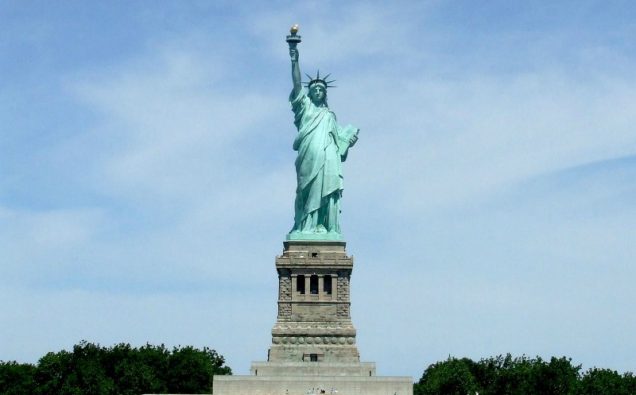
Photo I, Laslovarga/Wikimedia Commons
The cloud hanging over the future of Deferred Action for Childhood Arrivals program – which allows nearly 800,000 Dreamers to study and work in the United States – has touched off a stormy debate about implications of its repeal.
So, could there be a price tag on elimination of the program?
In economic terms, possibly yes.
But in abstract terms, probably none.
Let’s look at the economics of the matter first.
An open letter addressed to President Donald Trump by more than 400 entrepreneurs and business leaders has this to say:
“More than 97 percent are in school or in the workforce, 5 percent started their own business, 65 percent have purchased a vehicle, and 16 percent have purchased their first home. At least 72 percent of the top 25 Fortune 500 companies count DACA recipients among their employees.”
Additionally, there are some long-term calculations
Think tanks, closer to Democratic and Republican thinking, have come out with calculations of their own.
According to Center for American Progress, in the absence of the dreamers and their work, the United States could lose as much as $460.3 billion from its national GDP over 10 years.
On the other hand, CATO Institute estimates the loss to be $280 billion.
Some GOP backers of the move to end DACA also argue that unemployed Americans could fill in the job openings, and therefore, see a minimal economic loss in the event the program phases out. The opposition to the program stems partly from the argument that President Obama had acted beyond his constitutional powers when he introduced DACA program.
Let’s look at the abstract cost.
First is the emotional toll on dreamers – who came here just kids and know no other country except America since they have have lived here and are growing up here.
That clearly means that if forced out or allowed to live under the threat of deportation, the dreamers would suffer through no fault of their own.
But there are also moral and international questions that the United States Congress and the Administration must contend with while deciding the fate of dreamers.
One of the hallmarks of America’s high standing in the world and its economic success has been the country’s willingness to welcome the best and the brightest from around the world.
The United States’ taking in labor workforce has also helped it tremendously in many, if not all, cases.
The role of immigrants in America’s economy has been phenomenal in the last few decades. In 2015, immigrants contributed two trillion dollars to the national GDP. A recent report reveals that a massive 60 percent of the most successful technology companies were established by immigrants or their children. In the field of medicine, Muslims, who are just one peercent of the population account for 10 percent of the doctors and medical staff.
The overriding question Washington must grapple with is to weigh what kind of message such moves send to experts and skilled labor who want to come and serve the United States and in the process build their lives.
The idea of putting unemployed Americans – ignored by both the Obama and the Bush administrations – first is great. But its realization depends on the very factors that immigrants make possible. Among these are investments, expansion of the economy and with it generation of new jobs.
The U.S. should put its own people first but it cannot do so sustainably without innovation, investment and introduction of new technologies and businesses. Examples include creation of new jobs by the IT companies.
At the same time the great American story also brims with individual brilliance. Steve Jobs was the son of a Syrian immigrant. Shahid Khan, a Pakistani-American, who came to the United States as a teenager with just a few dollars in his pocket, gave and prospered with the idea of new style of vehicle bumpers.
Then, the question of both price and cost of the immigration programs also is related to the fundamental idea of the American dream – the very foundation of the tremendous progress that generations of Americans and immigrants have made.
According to Pew Research, America will need influx of new workers at the current rates to maintain a high economic growth for at least three decades to come.
So, lawmakers on the Capitol Hill and President Trump’s administration have a delicate political task at hand. Of course, immigration has to be a legal process but those brought here as kids cannot just be kicked out after the U.S. taxpayers money has gone into giving them an education, and their getting ready to contribute to the U.S. economy.
Perhaps no other country in the world has higher stakes on the issue of immigration than the United States in view of the new forms of the national economy as well as intense international competition Washington faces. The story of the United States is likely to remain allied with the story of immigrants for a long time to come.
















